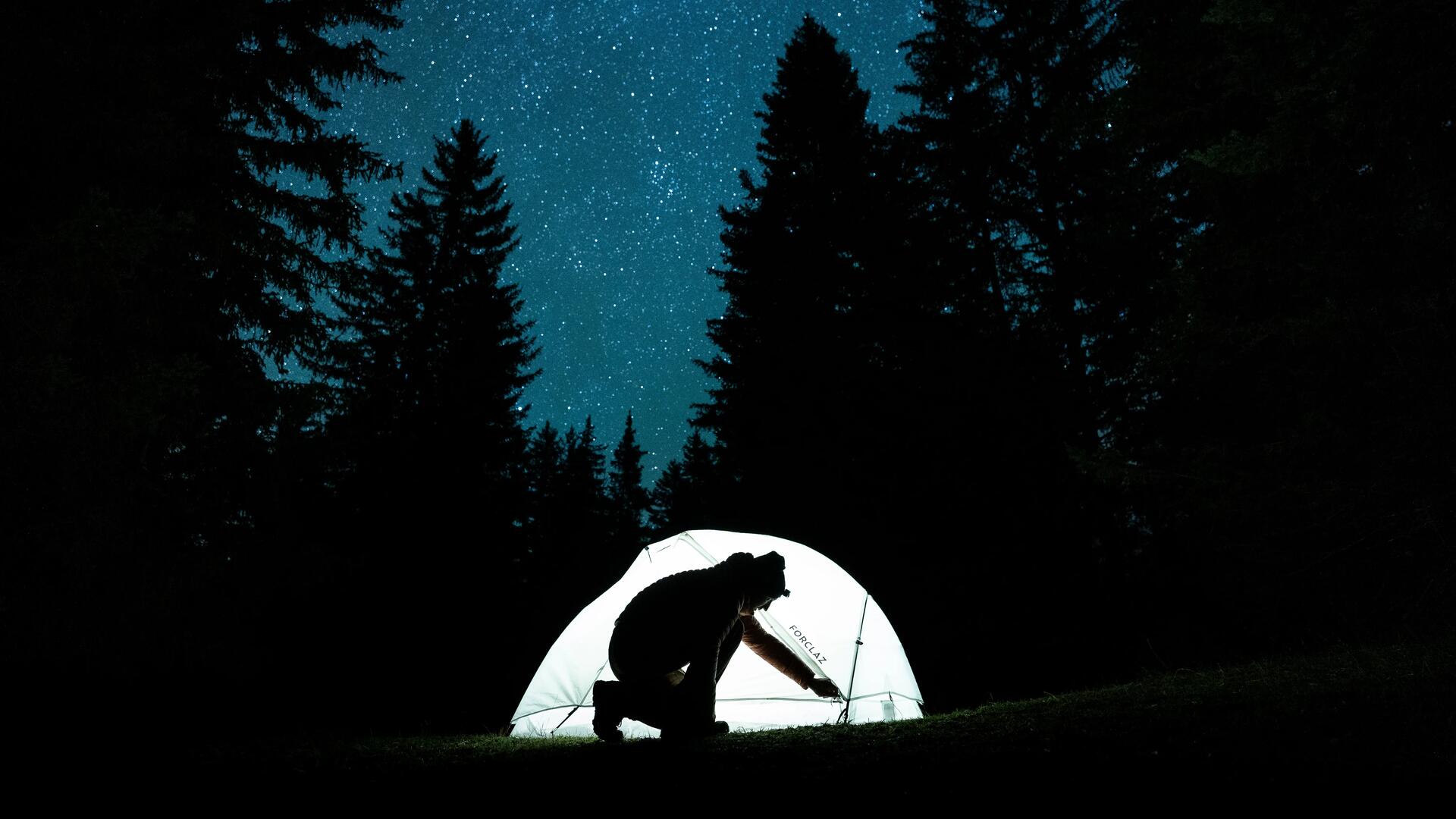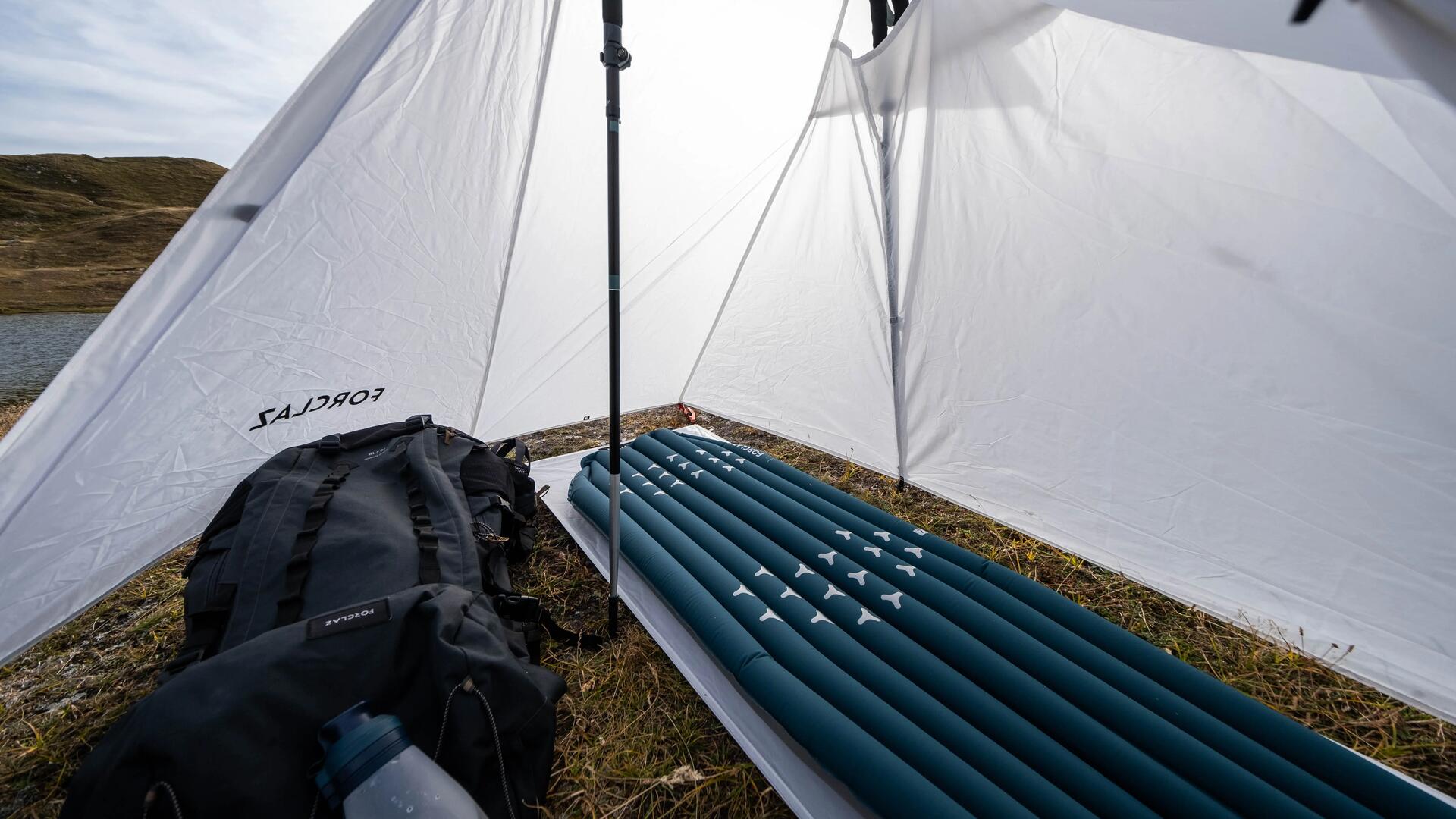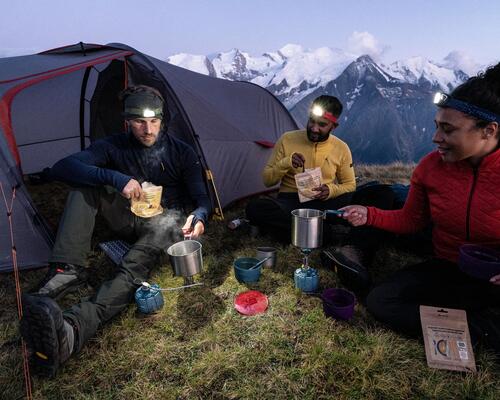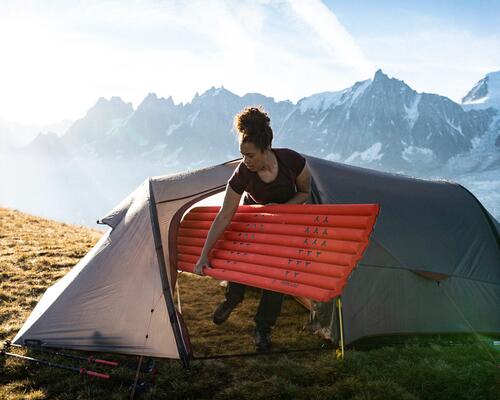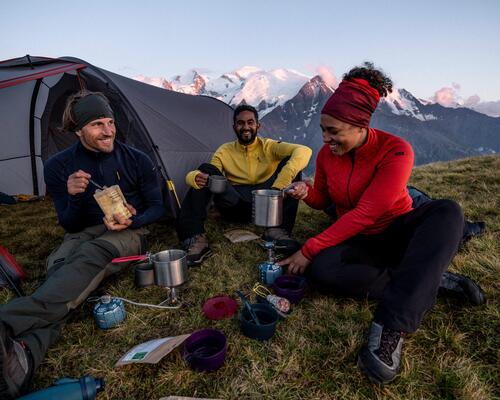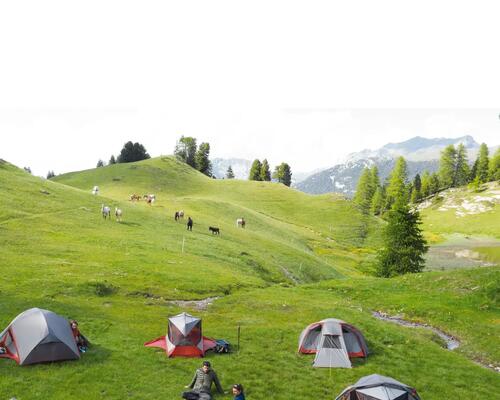Bivouac: definition
How does it differ from camping?
The word "bivouac" originally comes from military vocabulary and the German word biwacht (meaning "auxiliary guard service"). It refers to a temporary camp similar to those set up by infantrymen during Napoleonic military campaigns. These basic living quarters enabled them to stand guard or watch over enemy positions.
- Bivouacs are therefore light campsites, and are permitted by law in certain areas, provided that the tent is pitched at sunset and the campsite is vacated by sunrise. Bivouacs can be similar to wild camping.
- Camping, on the other hand, is characterised by the fact that it takes place in dedicated areas, which generally have to be paid for. You can leave your tent up for several days.
And if you bivouac without a tent, you can say you've spent "a night under the stars".
That said, you'll probably want a minimum of comfort, which is why you'll need dedicated equipment!


